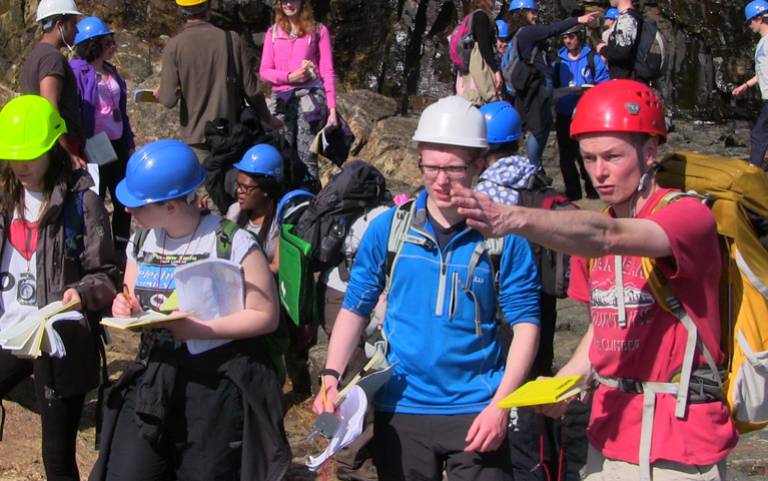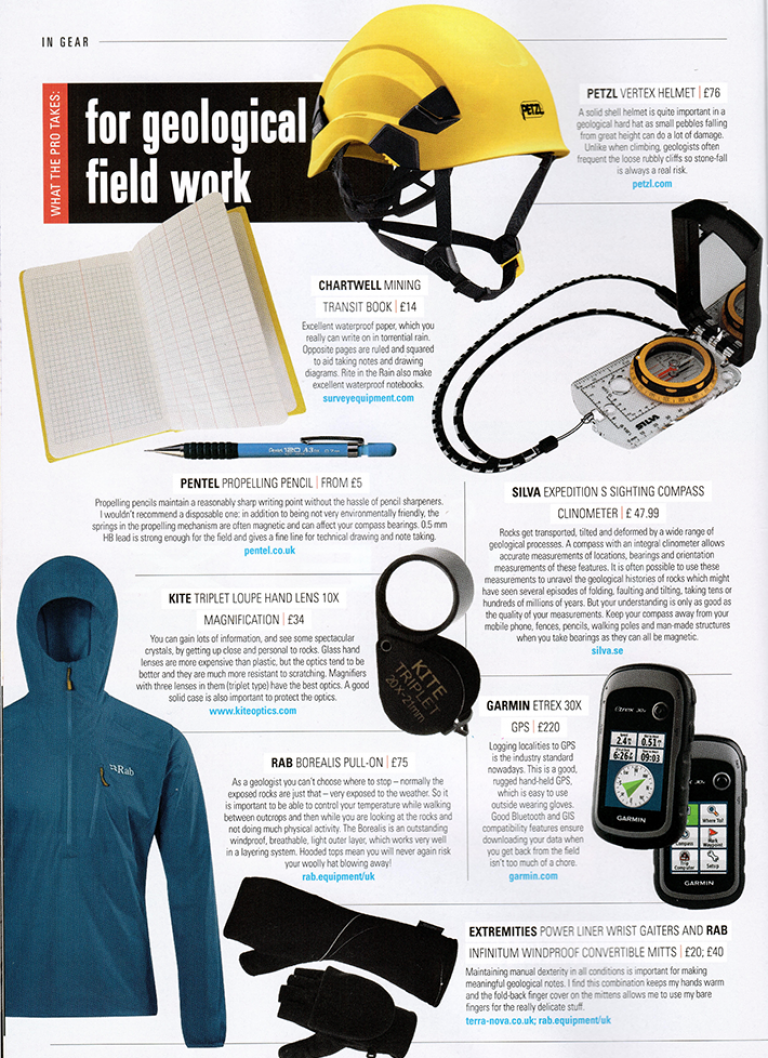Prof David Dobson qualifies as a Mountain Leader
17 March 2021
David, Professor of Earth Materials qualified as a summer Mountain Leader to provide his students with more rounded field instruction. He combines these interests in a YouTube channel OneMinuteGeology offering short, accessible, videos of interesting geology features.

This interview was published by the British Mountaineering Council in their national Magazine, Summit.
How did you get into geology and what do you like about it?
I have always loved it: my earliest emories are of looking for fossils on the south coast during family holidays. I really enjoy the breadth of disciplines required to make sense of something as complex as the Earth.
Professor of Earth Materials sounds like something out of Harry Potter! What do you actually do?
Much of my research is lab-based, reproducing the conditions in the deep n interior of the Earth, but I still get out into remote areas of the UK and abroad to teach field skills, collect important samples and to investigate the deep crustal processes exposed in the interiors of mountain chains.
You've said that the UK mountains are of world-class importance, what makes them so?
Britain has been on the edge of major tectonic plates for much of Earth's history. That means a lot has happened here and we have rocks from every time period and pretty much every geological setting contained in a relatively small space. You can see that just by looking at the diverse landscapes we have, from the otherworldly 3.5-billion-year old Lewisian rocks of the Northern-most highlands and the Outer Hebrides, to the Jurassic Coast of Dorset and the industrial landscape of the Cornish granites.
Where is the best place to walk in the UK, for geological interest?
That is a really hard question because everywhere in the UK has something of geological interest, even the cities. But if you want a really diverse range of things in a small area, a sort of mini Britain, the Isle of Skye has a bit of everything: postglacial features, exposed volcanic centres in the Black and Red Cuillin, a little bit of continental collision in the Moine rocks between Sleat and Ord, dinosaur footprints, and even a possible meteorite impact structure!

What's your dream geological feature and why?
It has to be something you could climb! For a fun geological day out, you can't beat the Zig Zags scramble on Bidean nam Bian, which follows one edge of the Glencoe Caldera, a massive collapsed magma chamber. You can see the scar where rhyolitic volcanic ash sits on top of andesite lavas running all the way along the North side of the glen, and the Zig Zag scramble follows this contact. This 400-million-year old glacially-excavated caldera is still informing our understanding of how modern large-scale volcanic eruptions occur.
What are your top tips for beginner amateur geologists?
Keep your eyes open. You never know what you might find. I once found a nice ammonite fossil weathering out of a cobble stone in a Bristol street.
Link:
- Prof David Dobson's academic profile
- YouTube: OneMinuteGeology
- YouTube: South West England - Cornwal fieldwork
 Close
Close

